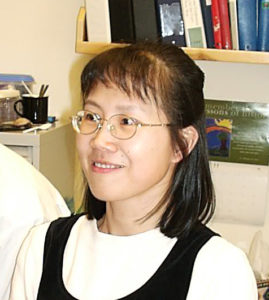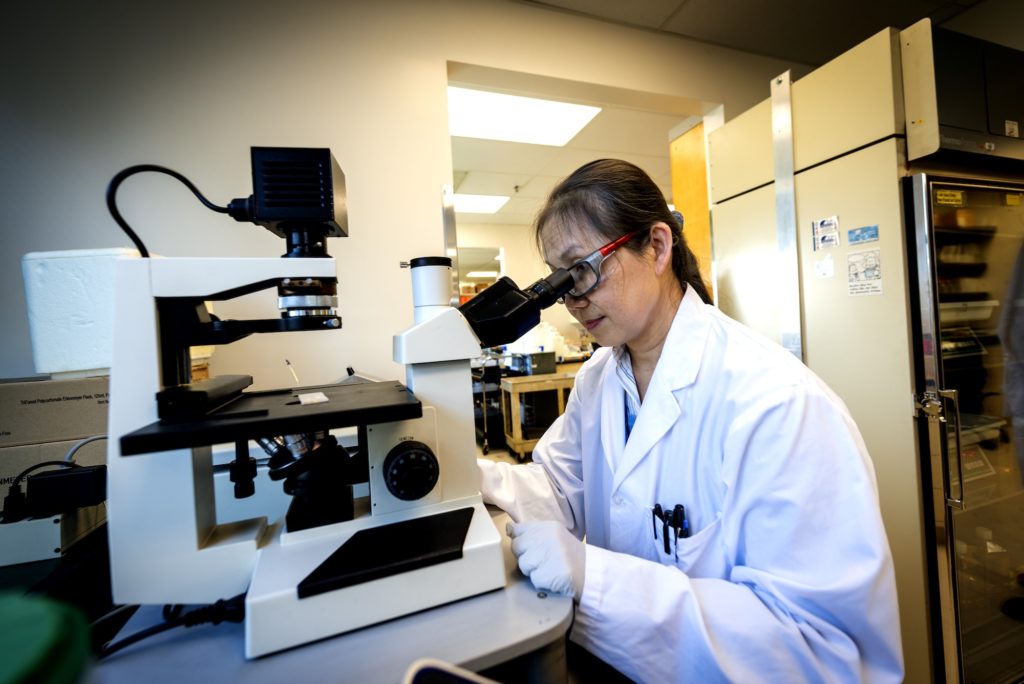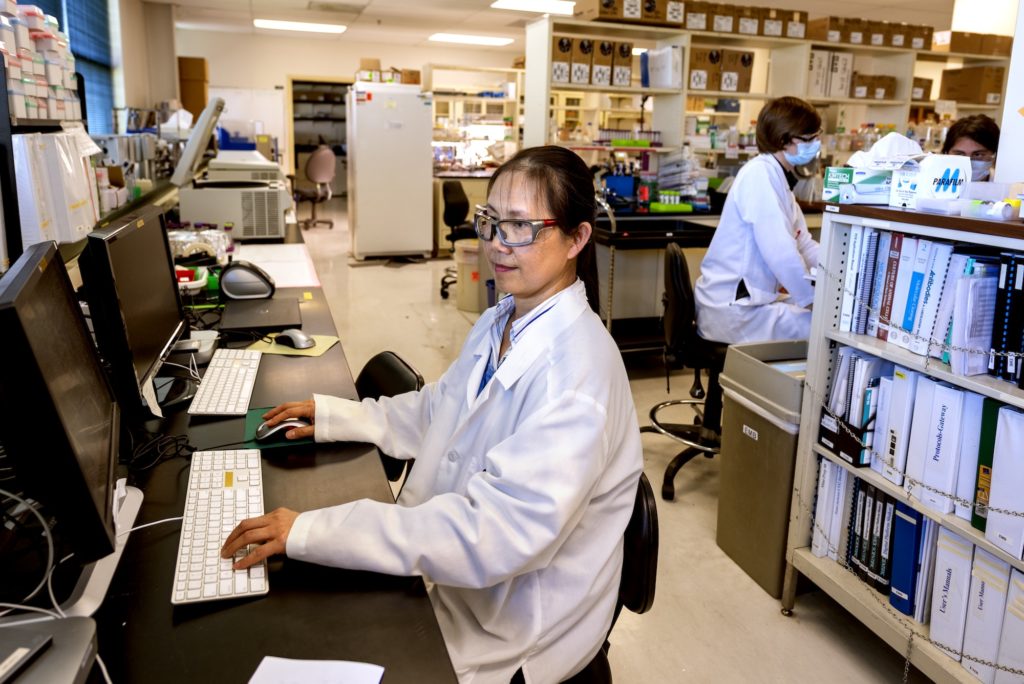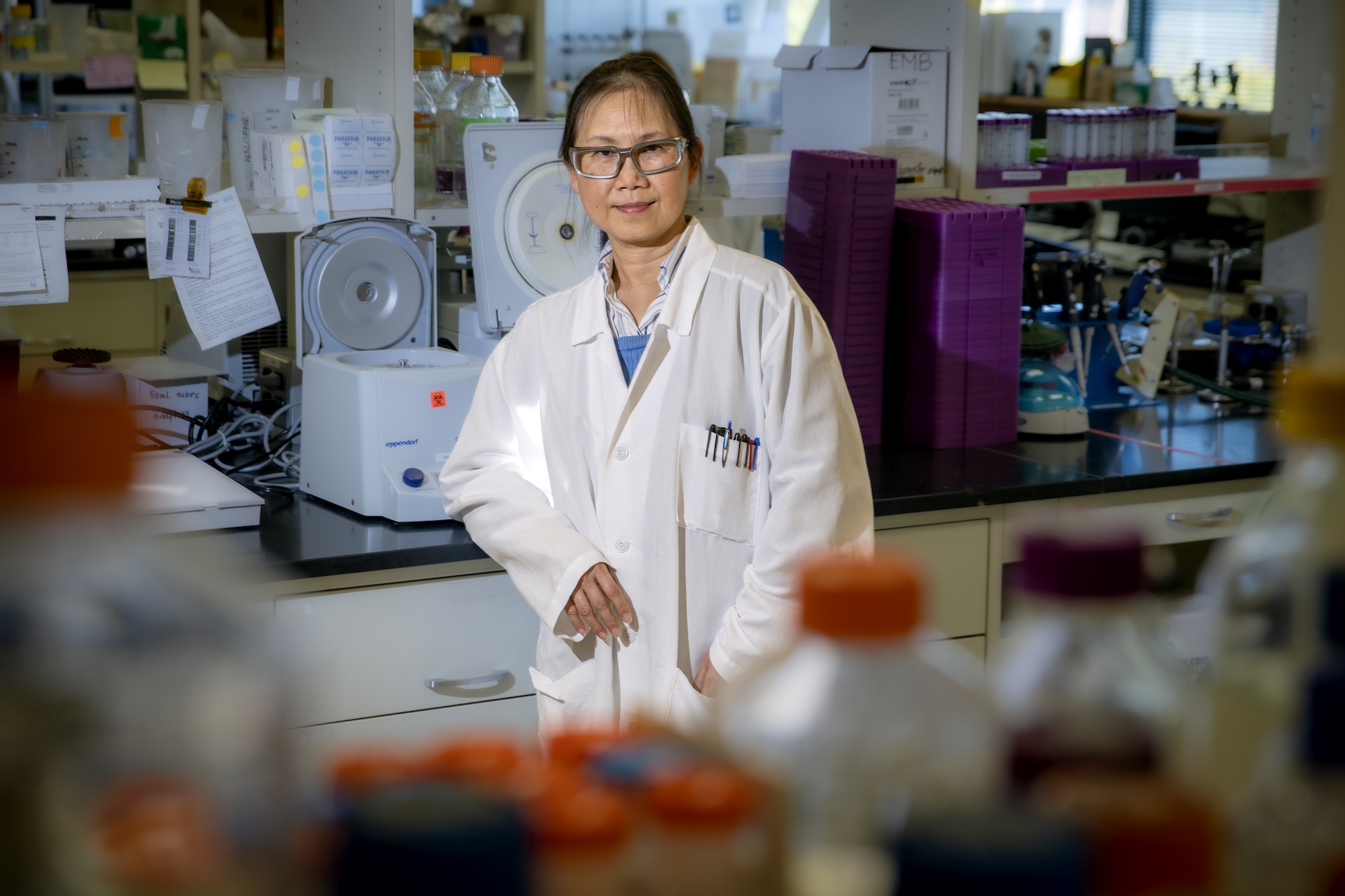Drawn to science at an early age, Miaw-Sheue Tsai remembers enjoying biology more than any other subject in school. “Chemistry was okay, physics next, and math at the very end,” Tsai recollected. To her, basic science was most interesting because it represented a foundation for everything and, with that, the tools needed to build solutions for the world.
Today, Tsai works in the Biological Systems and Engineering (BSE) Division as a research scientist. She leads a group that focuses on learning how cells identify and correct damaged DNA. It’s these DNA repair pathways that help keep cells healthy and free of defects that can lead to cancer, aging-related diseases, and neurological development issues.
This type of work plays to Tsai’s interests in both the fundamental principles of biology and the necessity for team science. In order to fix the damaged DNA in cells, one must first understand both how healthy cells work and why things go wrong. That means researchers with many different types of expertise must come together to study, learn, and work towards a solution.
Incremental Growth

Tsai, who was born in Taiwan, recalls feeling challenged by math-related coursework in high school. “At some point, I was almost ready to give up because I thought I wasn’t good enough,” she said. Tsai persevered and eventually discovered a love for biochemistry and microbiology at her university. After earning the equivalent of an undergraduate degree in her home country, she completed a graduate program at UC Davis. “That was one of the best decisions of my life,” Tsai said. “It was really the most creative period of my time.”
Around that point in her career, Tsai was introduced to two crucial components that continue to influence her career today. She began studying the mechanics of how and why cells turn from healthy to not, and experienced the power of working alongside a bright and supportive supervisor. This combination built the confidence that empowered Tsai to really stretch and collaborate with her labmates and helped to affirm that she belonged in the world of science.
Tsai’s postdoctoral years brought her to a breast cancer research group at Berkeley Lab, which helped her begin connecting her work with real-world applications. She was also introduced to two “legendary people who were strong female characters,” she said. Priscilla Cooper and Mina Bissell, then leading the research group at Berkeley Lab and currently still contributing to the Biosciences Area. Tsai credits their leadership and mentoring as pivotal influences on her scientific career. “It was really inspiring for me, they were really fearless and persistent about never giving up.”
As her time in that position came to an end, Tsai was introduced to the then recently established program called the Structural Cell Biology of DNA Repair Machines (SBDR) in the Biosciences Area. Although her experience wasn’t directly related to DNA repair, there was enough of an overlap and her interest was piqued; she agreed to join the team in 2002 and helped set up the lab.

Solving Complex Problems
Nearly 20 years later, Tsai directs one of the two major resource groups, the Expression and Molecular Biology (EMB) Core, for SBDR. Collectively, the SBDR scientists are working to understand what happens when the repair pathways of DNA go wrong. Tsai’s group works upstream to obtain laboratory-derived, or recombinant proteins, by introducing genes into cells, which then dictate what type of protein should be made. This process, coupled with the other major resource core, which uses X-ray related technologies to monitor structure, helps Tsai and SBDR understand how these proteins work, and what enhances or inhibits function.
Ultimately they’re aiming to get structural information about what DNA repair proteins actually do when they’re fixing damage in our genomes. But an understanding of how these proteins are formed and work together is still lacking. “The more we understand how DNA is repaired, the more we’re realizing that it’s like human beings living in a society — you can’t do everything on your own, you need to work with other people,” said Tsai. “Similarly, every protein has a very specific function and needs to work with others.”

The people who encompass SBDR, roughly 6 teams and 18 principal investigators across the country, have a wide range of expertise. Due to the intricate nature of protein function—dictated by both the molecules themselves and the ways that they interact with one another—many different types of skills are needed to understand the function of repair as things go awry. From genetics and chemistry, to biophysics and structural biology, Tsai and the SBDR team take a divide-and-conquer approach to building the teams who are tasked with the problems they’re looking to solve.

The program recently received its fifth round of funding from the National Cancer Institute and has expanded the scope of its work to include large protein complexes to understand how the pathways and machines work to repair damaged genomes. Yet its focus remains on the same quest that existed when Tsai joined: understanding how a protein recognizes when something is wrong with its DNA and fixes the problem. To Tsai, there’s still a long way to go but the next few years will likely hold a lot of progress. And she sees her greatest contribution to these advancements as someone who helps jump start new collaborations across teams.
“This is the whole idea of what the program is about: People can work as a team to have team science,” Tsai said. “That’s all it takes in order to solve all these complicated topics and research problems.” ⬢
Written by Ashleigh Papp, a communications specialist for Berkeley Lab’s Biosciences Area.
Read other profiles in the Behind the Breakthroughs series.




